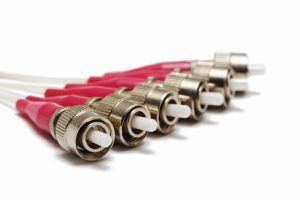When it comes to fiber optic cable installation, companies are often content with leaving the details to the professionals. Information technology is constantly changing, and keeping up with the specifications of data cabling and network installation can often be a lot for one person. However, there are those who want to know how their email can reach the other side of the world in less than a seventh of a second, and at Mark IV Communications, we’re always happy to help broaden someone’s understanding of technology. In this post, we’ll cover the difference between a single-mode and a multi-mode fiber optic cable.

Single-Mode Versus Multi-Mode Fiber Optic Cables
Data Cabling Orange County

Single-Mode Cable
First we need to define what a “mode” is – the mode is the path that the light beam follows down the fiber. In a single-mode fiber, the core is approximately five to 10 microns (millionths of a meter) in diameter, and the light signals travel straight down the middle of the fiber. The most common uses for single-mode fibers are cable, TV, and internet cabling, with thousands of fibers wrapped into a bundle within each cable.
Multi-Mode Cable
The fibers in a multi-mode cable are about 10 times bigger than those in a single-mode, and the “multi” refers to the multiple paths the light beams can take through the cable. These cables are best for sending info over short distances, and are commonly used for computer network cabling.
If you’re interested in adding fiber optic cabling to your Orange County business, or you want to update your internal computer network, contact Mark IV today!

